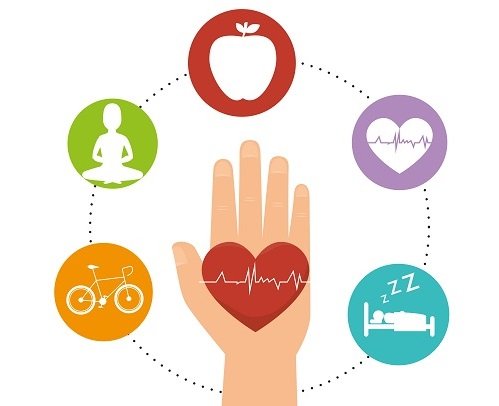Enhancing Longevity and Well-being Through Mind-Body Practices: A Biopsychosocial Approach
Contemporary lifestyles are increasingly characterized by heightened stress and anxiety, demanding innovative strategies for promoting longevity and holistic well-being. This paper investigates the efficacy of mind-body practices in achieving these objectives, analyzing their mechanisms of action through the lens of the biopsychosocial model. This model posits that health outcomes are a complex interplay of biological, psychological, and social factors. Key physiological concepts central to this discussion include the hypothalamic-pituitary-adrenal (HPA) axis—the body's primary stress response system; allostatic load—the cumulative physiological burden of chronic stress; and the autonomic nervous system (ANS), specifically the parasympathetic and sympathetic branches responsible for regulating relaxation and arousal, respectively. A comprehensive understanding of these concepts is vital for appreciating the profound impact of mind-body practices on stress mitigation and lifespan extension.
1. Mindfulness-Based Meditation and ANS Modulation: Mindfulness meditation, focusing on present moment awareness, directly influences the ANS. By cultivating present moment awareness, individuals interrupt the chronic activation of the HPA axis, leading to reduced cortisol release and diminished sympathetic nervous system activity. This physiological downregulation effectively mitigates allostatic load, a cornerstone of the allostatic load model of disease. Research consistently links regular meditation practice to improved cardiovascular health, enhanced immune function, and superior cognitive performance—all vital contributors to longevity. Practical implementation involves initiating daily meditation sessions, starting with short, guided meditations (5–10 minutes) and progressively increasing duration and complexity to enhance sustained adherence and efficacy. This graded exposure approach minimizes stress and maximizes the likelihood of long-term engagement.
2. Yoga and Tai Chi: Integrated Physical and Mental Well-being: Yoga and Tai Chi, time-honored mind-body practices, synergistically combine physical postures (asanas), controlled breathing (pranayama), and mindful movement. Physiologically, they improve flexibility, strength, balance, and proprioception (body awareness), reducing the risk of age-related falls and injuries. The mindful movement component inherently incorporates meditative elements, concurrently reducing stress and sharpening mental clarity. This synergistic effect of physical and mental engagement enhances cardiovascular health, reduces inflammation, and improves cognitive function, thereby supporting longevity. Practical application necessitates selecting a practice style appropriate for individual fitness levels, gradually increasing intensity and duration, and consistently integrating the practice into a daily or weekly routine to optimize benefits. The principles of progressive overload and the dose-response relationship in exercise physiology underpin this approach.
3. Qigong and Breathwork: Vagus Nerve Stimulation and Parasympathetic Activation: Qigong, a traditional Chinese practice, and diverse breathwork techniques target the ANS through controlled breathing and gentle movements. Deep, slow diaphragmatic breathing stimulates the vagus nerve, a crucial component of the parasympathetic nervous system, counteracting chronic stress by reducing sympathetic activation. This mechanism leads to lower blood pressure, reduced anxiety, and improved sleep quality—all essential determinants of lifespan. Practical application involves incorporating daily diaphragmatic breathing exercises (10–15 minutes) and progressively engaging in introductory Qigong forms under qualified guidance to ensure correct technique and safety. This phased approach aligns with the principles of gradual skill acquisition and minimizes the risk of injury.
4. Mindful Eating and Nature-Based Interventions: Holistic Lifestyle Enhancements: Mindful eating, applying mindfulness to nutrition, promotes heightened awareness of the sensory experience of eating, fostering a healthier relationship with food. This practice can mitigate emotional eating, leading to healthier dietary choices that contribute directly to improved physical health and increased longevity. Similarly, nature therapy leverages the restorative effects of natural environments. Studies demonstrate that time spent in nature reduces stress hormones, lowers blood pressure, and elevates mood, thus reducing allostatic load and fostering psychological well-being. This aligns with the restorative environment theory. Practical application involves integrating mindful eating into daily meals and incorporating regular exposure to natural environments, even brief periods offering substantial benefits. The biophilia hypothesis supports the beneficial effects of nature exposure.
5. Expressive Arts Therapies: Emotional Processing and Physical Release: Movement therapies, such as dance therapy and other expressive arts therapies, facilitate emotional processing and stress release through physical activity and creative expression. These approaches improve emotional well-being, a crucial factor impacting physical health and resilience. Endorphin release during these activities contributes to enhanced mood and pain management. Practical application involves exploring professionally guided dance or expressive arts therapy, or engaging in individual activities like painting, music, or creative writing to nurture self-expression and emotional regulation. The cathartic effect of these activities is a key mechanism.
6. Complementary Therapies and Self-Reflection: Enhancing Self-Awareness and Stress Resilience: Acupuncture, a traditional Chinese medicine technique, may influence the body's energy flow and reduce pain through the stimulation of specific acupoints. Journaling and reflective practices aid emotional processing and self-awareness, supporting stress management and emotional regulation. While the precise mechanisms of these methods remain under investigation, they show promise for stress reduction and enhanced self-awareness. Practical application includes consulting licensed acupuncturists and incorporating regular journaling or reflective practices into daily or weekly routines. This approach utilizes both somatic and cognitive coping mechanisms.
Conclusions and Recommendations: The integration of mind-body practices offers a holistic and potentially highly effective approach to enhancing longevity and well-being. These techniques demonstrably impact physiological processes linked to stress management, immune function, and cardiovascular health. A personalized approach, tailoring practices to individual preferences and needs, is essential for optimal outcomes. Future research should emphasize large-scale, longitudinal studies evaluating the long-term effects of these practices on specific health outcomes, controlling for confounding variables such as age, baseline health status, and practice adherence. Further research is needed to explore the underlying neurobiological mechanisms and investigate the potential synergistic effects of combining various mind-body practices. Crucially, mind-body practices should be viewed as complementary to, not replacements for, conventional healthcare.
Reader Pool: Considering the evidence presented on mind-body practices and their potential impact on longevity, what innovative research methodologies could be employed to more rigorously assess their efficacy and facilitate broader integration into preventive healthcare strategies?





No comments yet. Be the first to share your thoughts!